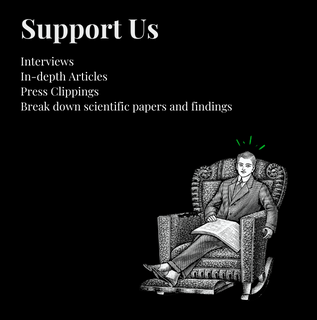The lack of scientific diversity promoted by the World Health Organization (WHO) affects public health. Over the last decade, the WHO and the Framework Convention on Tobacco Control (FCTC) have faced systematic criticism from scientists, public health policy experts, consumers, and other stakeholders due to their inflexible stance towards dialogue, their limitations on harm reduction, and for overlooking the consequences derived from such stance.
One of the main disadvantages of the WHO and FCTC’s stance is restricting scientific diversity during debate. By limiting dialogue to a selected and narrow spectrum of voices, these organizations tend to evaluate scientific evidence in a biased manner in the decision-making process and policy recommendations.
This methodology, prone to favor policy formulations based on less informed or overly conservative perspectives, negatively impacts public health and encourages research or technological innovation in the health sector. By excluding divergent voices and new perspectives, a one-dimensional view that does not capture the issues’ complexity is promoted but rather generates a biased interpretation of reality.
Intransigence Towards Harm Reduction
The resistance of the WHO and the FCTC towards harm reduction strategies may also be hampering more effective efforts to manage the risks associated with substance use.
The harm reduction strategy, successfully tested in the management of illicit drugs, has shown encouraging results in reducing the adverse effects related to drug use, such as disease transmission through needle sharing and overdose deaths. In the opinion of many critics, the stance of the WHO and the FCTC is driving the adoption of policies that do not consider all possible consequences or overlook crucial evidence that could modify the assessment of risks and benefits.
This limitation in the diversity of opinions hinders innovation and discourages the development of less harmful alternatives in the context of smoking. An environment fostering competition and evaluating different viewpoints based on their scientific merit is essential for research and the development of innovations.
Likewise, a policy influenced by a limited range of opinions will undoubtedly result in regulations that do not fully leverage the potential of harm reduction and technological innovation in improving public health. For example, restrictive policies towards vaping, based on a biased interpretation of the evidence, deprive adult smokers of access to less harmful alternatives, thus perpetuating the high levels of harm associated with the use of combustible tobacco and premature death.
The Advantages of Diversity
Excluding a wide range of experts and opinions polarizes the public and scientific debate, eroding trust in regulatory authorities and science. This can negatively affect the public perception of health policies and trust in the scientific process.
To enrich the debate and improve scientific diversity, creating spaces that promote dialogue among scientists, regulators, the industry, consumer groups, and other relevant actors dedicated to the topic would be beneficial. Establishing inclusive, public, and transparent forums can ensure that diverse perspectives are considered.
Making the decision-making process transparent, including publishing evidence and the reasons behind decisions, can foster trust and the inclusion of different scientific perspectives. Similarly, creating panels of independent experts to review evidence and policy proposals and making these processes accessible to the public can mitigate biases and ensure a fair evaluation of the available information.
Improving communication about the risks and benefits of harm reduction products through evidence-based information campaigns can contribute to a more complete and nuanced understanding of the available science, benefiting both the public and policy-makers.
The restriction of scientific diversity in the debate on the fight against smoking perpetuated by the Framework Convention on Tobacco Control results in harm to public health that the World Health Organization must repair.
Persistent Ignorance about Harm Reduction
Tobacco causes more than 8 million deaths a year worldwide, and the omission of the World Health Organization (WHO) in implementing harm reduction strategies in the context of smoking and new nicotine products that replace cigarettes is an urgent concern in the field of public health.
The growing evidence in favor of harm reduction as an effective method against smoking finds a significant obstacle in the reluctance of the WHO to integrate advocates specializing in this perspective and consumers of nicotine products into the policy formulation debate. This resistance was expressed more than once in the exclusion and secrecy of the Conference of the Parties of the Framework Convention on Tobacco Control, waste data, methods, and experiences that could combat smoking more effectively.
What is Tobacco Harm Reduction?
Harm reduction is based on the humanitarian principle of minimizing the adverse effects associated with the use of addictive substances without requiring total abstinence. In the field of smoking, this translates into the promotion of safer alternatives, such as electronic nicotine delivery systems, which include electronic cigarettes and heated tobacco products, as well as options like Swedish snus and nicotine pouches, which present much lower risks compared to traditional combustible tobacco.
The reluctance of the WHO to consider these alternatives as an essential part of public health strategies is generally based on concerns about the long-term safety of these products, the risk of initiating nicotine use in non-smokers, especially young people, and the fear of undermining tobacco control efforts that promote total abstinence. All these issues could be debated broadly and contextually, under a scientific and proactive approach, if the WHO/FCTC expanded the debate to a broader range of voices.
The exclusion of harm reduction advocates and users of nicotine products from discussions, recommendations, and policy formulation means that those responsible for these do not take advantage of valuable opportunities to better understand smokers’ realities, needs, and behaviors. Inclusion would ensure that policies are based on a complete understanding of current research and the objective reality of people, not just on the precautionary principle, thus promoting the development of truly evidence-based policies.
The Importance of Inclusion
Contributing to the debate of users of new nicotine products is crucial to assessing the effectiveness of these products in reducing or eliminating tobacco use and associated health problems. Moreover, it would be possible to design policies that minimize the potential risks associated with the use of electronic nicotine delivery systems and similar products, maximizing their benefits in tobacco harm reduction. This implies social responsibility: promoting adapted harm reduction strategies and creating mechanisms to prevent unwanted effects.
The formulation of policies without the participation of these groups can lead to adopting restrictive measures that, paradoxically, are going to perpetuate the consumption of combustible tobacco or encourage the illicit market of nicotine products.
A more inclusive and democratic approach is essential to combat smoking more effectively. Adopting an open perspective that recognizes the potential of harm reduction, reevaluating existing policies in light of emerging evidence on the effectiveness of nicotine products, and promoting research to fill the gaps in our knowledge about the long-term effects of these products is imperative.
Considering all stakeholders in constructive dialogue, including harm reduction advocates, nicotine product consumers, and experts in various fields of public health, is the ideal approach to formulating balanced policies.
It is vital to highlight that adopting a harm reduction strategy does not mean giving up efforts to prevent the initiation of smoking or nicotine use or to stop promoting total cessation. On the contrary, it expands the spectrum of strategies available to mitigate the devastating impact of smoking on public health.
Ignoring this perspective not only wastes opportunities to combat smoking more effectively but may unnecessarily prolong the harm associated with tobacco use and millions of deaths that could be avoided.


